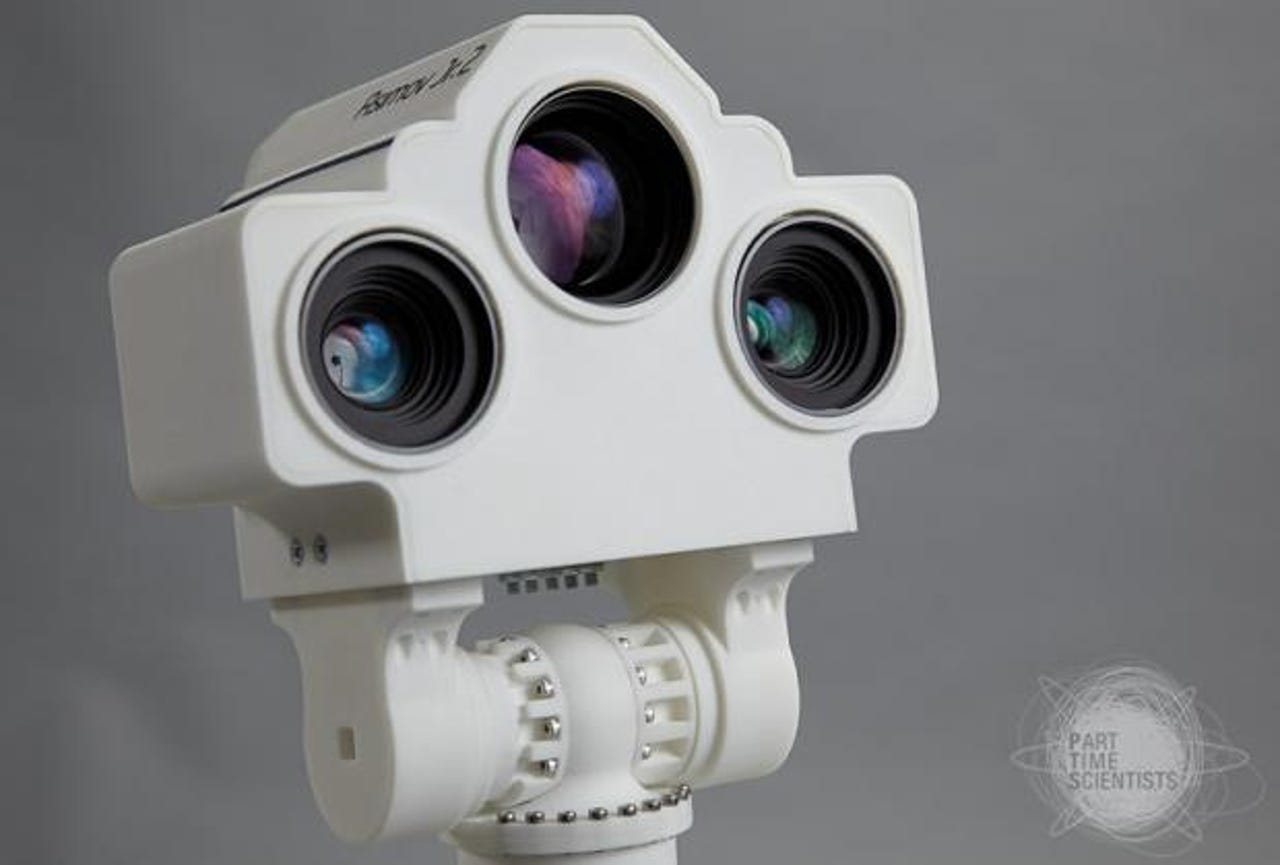Home-brew hackers cook up Europe's return to the Moon

Friday was the 43rd anniversary of the first Moon landing. It's also now nearly 40 years since anyone walked on the Moon — or even landed an exploratory probe on its surface. Spacecraft have orbited it, even crashed into it, but the Moon is still empty, still a sleeping satellite.
But that's all going to change, very soon. Over the next three years, we're going to see a flurry of attempts to put robot rovers on the Moon. But these aren't going to be high-budget affairs, with near-unlimited government funds and massive research teams. Instead, they are 26 widely varied groups that mix volunteers and commercial sponsors, all competing for the Google Lunar X-Prize.
"The $30m Google Lunar X PRIZE will be awarded to the first privately funded teams to build robots that successfully land on the lunar surface, explore the Moon by moving at least 500 meters (~1/3 of a mile), and return high definition video and imagery," the rules for the Lunar X-Prize contest say.
The first team to land a rover on the Moon and complete the objectives wins $20m (£12.8m).
It's quite a challenge. First you need a lander, one capable of slowing from lunar orbital velocity. Then you need a rover, capable of surviving the heat of the lunar day and the cold of the lunar night — with little in the way of thermal control. You've then got to drive that rover on the Moon, controlling it through three seconds of speed-of-light lag.
That means you have a lot of problems to solve, from hardware to software, from materials science and power supplies, to computer vision and radio communications.
Part Time Scientists
We met one of the teams — Part Time Scientists— at Nvidia's GPU Technology Conference back in May. The effort is based in Germany, but it now has members all over the world.

With a slot booked on a decommissioned Russian nuclear missile, their lunar lander and the Asimov rover are going to take a slow route to the Moon, before dropping on to the surface and starting their exploration. It's Europe's almost-secret private space programme, and it's nearly ready to go to the Moon.
The Moon is a harsh environment, and the rover needs to be tough. It also needs as much autonomy as possible.
While Part Time Scientists are putting together a cloud-linked global communications network to handle radio links to their lander and rover (using amateur radio bands), there's still too much lag in the system to deliver a hands-on driving experience. The rover needs to have some smarts in order to process information about its environment, while still handling input from a driver on Earth.
Part Time Scientists are taking a lot of advantage of open-source tools and techniques, and are using off-the-shelf hardware where possible. Of course, that can't always be the case; but it's a quick on-ramp, and the approach let the team build its prototype rovers and test out the software needed to guide a robot across hostile terrain.
Most of the computing problems in autonomous vehicles have been solved. The algorithms used by Stanford University's DARPA Grand Challenge entries have been published, and you can find open-source versions of many of the tools and techniques they used. In fact, many of the algorithms are able to run on the parallel-processing arrays of the modern GPU, using tools like Nvidia's CUDA.
Using a GPU as a parallel-processing system can give a robot like Asimov a lot more bang for its buck — and can put a European rover on the Moon a lot more quickly than much of the competition.
It's been too long since we chose to go to the Moon — and we chose to go then not because it was easy, but because it was hard. Hardware and software hackers now have the chance to do science and to learn — while putting a robot on the lunar surface.
It is a grand challenge indeed. Let's see if Europe can make it back to the Moon.